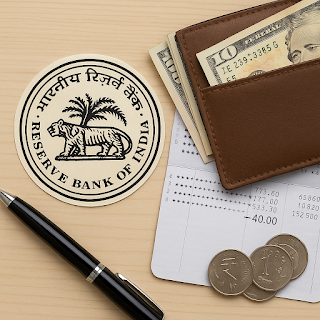Indian Currency Notes: Home Ministry Issues Major Alert on ₹500 Notes
A critical situation has emerged concerning India's currency, particularly regarding the ₹500 note. If you possess a ₹500 note, this information is extremely important for you. The Ministry of Home Affairs has issued a serious alert regarding ₹500 notes, urging banks and financial institutions to be cautious. This alert highlights the increasing circulation of counterfeit notes, which are of exceptionally high quality and difficult to distinguish from genuine ones.
The Rising Threat of Fake ₹500 Notes
According to the Ministry of Home Affairs, fake ₹500 notes of "exceptionally high quality" have entered circulation. These counterfeit notes are so well-made that they are almost indistinguishable from real notes. The Ministry has called for banks and financial institutions to stay vigilant and take the necessary precautions to prevent the circulation of these fake notes.
How to Differentiate Between Real and Fake Notes
The Ministry has provided a simple method to identify fake notes from genuine ones. Fake ₹500 notes have a subtle error in the inscription of 'RESERVE BANK OF INDIA.' In genuine notes, the inscription is spelled correctly, but in fake notes, the letter 'E' is replaced with the letter 'A.' This error is so minor that it often goes unnoticed, and at first glance, it is difficult to spot. The Ministry has emphasized that this alert is "extremely important" to prevent the circulation of counterfeit notes.
The Impact of Fake Notes in Circulation
The Ministry also mentioned that once fake notes enter circulation, it becomes difficult to determine their exact number. Most of the information is gathered from fake notes deposited in banks, but the actual number of counterfeit notes in circulation could be much higher than what is currently known. The Ministry has warned that this could pose a significant threat if action is not taken immediately to curb the circulation of fake notes.
Banks and Police Advised to Stay Cautious
Banks and financial institutions have been advised to exercise extra caution while checking cash. The Ministry has shared images of counterfeit notes to make it easier to identify them. The government has also appealed to the public to inspect their cash carefully. If they come across any suspicious notes, they are advised to report them immediately to the police or the bank. Taking such precautions can help prevent the further spread of fake notes in the market.
How Many Fake Notes Are in Circulation?
The Ministry clarified that once counterfeit notes enter the market, it becomes nearly impossible to determine their exact number. Information is typically gathered when these fake notes are deposited in banks, but the actual number of fake notes in circulation could be much higher. The Ministry has emphasized that this is only an estimate, and the true extent of the problem may be much larger.
What to Do If You Receive a Suspected Fake Note?
If you come across a suspicious note, the first step is not to deposit it into a bank. Instead, immediately report it to the bank or the police. By doing so, you can not only protect yourself from potential financial loss but also help prevent the spread of fake notes in circulation. The Ministry has stated that it is the responsibility of every citizen to remain vigilant and take the necessary steps to identify counterfeit notes.
Why Is the Spread of Fake Notes Increasing?
The Ministry explained that counterfeit notes are circulated by criminals who smuggle them into the market with the intention of causing financial damage. These fake notes have no real value, but when they are introduced into circulation, they can cause substantial harm to the economy. The spread of counterfeit notes is a serious threat to the integrity of India's currency system and financial infrastructure.
How Are Fake Notes Tracked in Circulation?
The Ministry further explained that tracking the exact number of fake notes in circulation is challenging. The only data available is based on fake notes deposited in banks, but the actual number may be much larger. This makes it difficult to fully assess the extent of the problem. However, it is clear that the number of counterfeit notes is likely much greater than what has been officially reported.
Steps to Prevent the Spread of Fake Notes
There are several steps you can take to protect yourself from counterfeit notes. First, always inspect your notes carefully to ensure they are genuine. Follow the identification tips provided by the Ministry to differentiate fake notes. Additionally, when making cash transactions, ensure that you are dealing with a trusted and reliable source. If you are making a large cash transaction at the bank, follow the bank's procedures for verifying the authenticity of the notes you receive.
Government's Efforts to Tackle the Fake Note Problem
The Ministry of Home Affairs has implemented several measures to address the issue of fake notes. These efforts include increased monitoring of the banking system, gathering intelligence, and activating relevant agencies to curb the circulation of counterfeit notes. The Ministry has also stated that government agencies need to remain alert in order to effectively tackle the problem of fake notes.
Conclusion
The threat posed by fake ₹500 notes in India has become a growing concern. The alert issued by the Ministry of Home Affairs has made this issue more prominent. Banks and financial institutions must remain cautious, and the general public must also stay vigilant in order to protect themselves from counterfeit notes. By following the precautions outlined in the alert and staying alert, the spread of fake notes can be curtailed, and the financial damage caused by them can be minimized.





Comments
Post a Comment